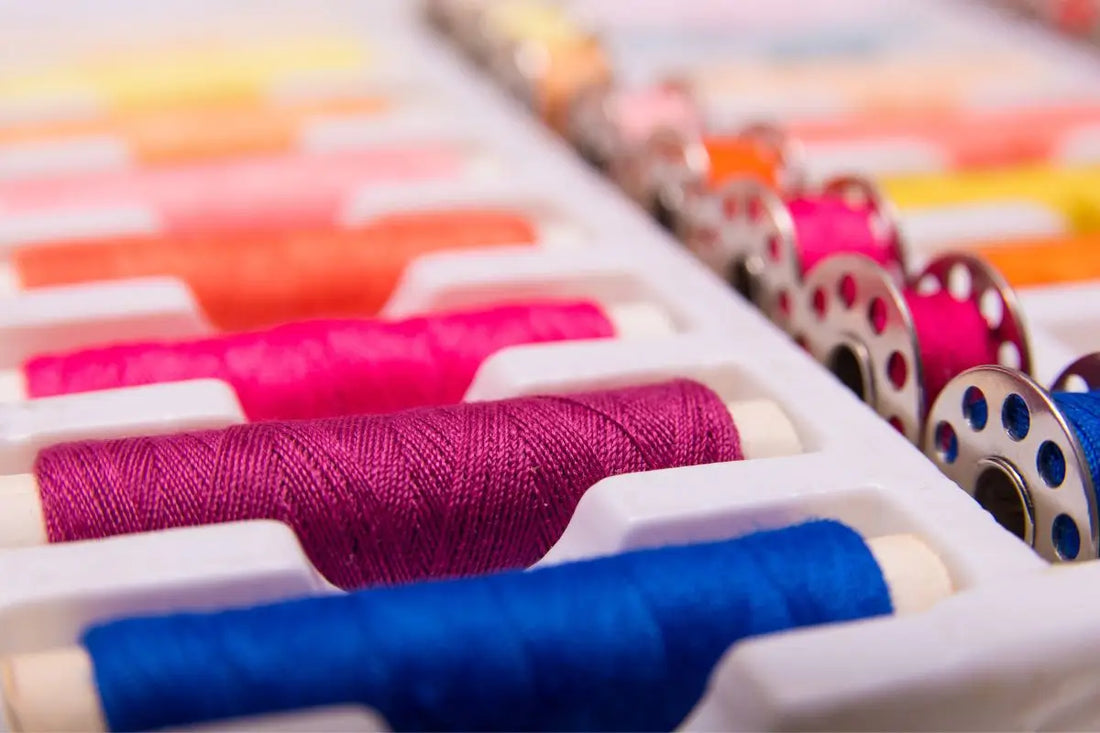
Which Sewing Thread Size is Suitable for My Sewing Machine?
Share
Tips for Buying Sewing Thread
Choosing the right sewing thread size and type can greatly affect your sewing project's quality and durability. When I first started sewing, I often wondered: Which sewing thread size is suitable for my machine and my project? Here are essential tips to help you confidently buy sewing thread.
Thread vs. Yarn: What's the Difference?
It's common to hear the terms "thread" and "yarn" used interchangeably, but they have distinct meanings:
- Thread refers to the thin strands spun directly from fibers.
- Yarn is made from multiple threads twisted together, forming a thicker strand.
Importance of Quality Sewing Thread
Quality matters when it comes to sewing thread. Initially, I purchased inexpensive thread kits from discount stores, but soon found myself frustrated by frequent thread breaks. Investing in higher-quality thread made my sewing smoother, and my projects became noticeably stronger and more professional.
Is Grandma's Thread Always Reliable?
Though threads inherited from your grandmother or found at flea markets may hold sentimental value, they aren't always the best choice for practical use. Older threads can become brittle, dry, and prone to breaking, especially if stored improperly in damp or dusty environments.
Quick Tear Test to Check Thread Quality
Before using older or gifted threads, perform a simple tear test:
- Pull the thread sharply.
- If it springs back slightly, it's still usable.
- If it snaps easily, the thread has become brittle and shouldn't be used.

Types of Sewing Threads and Their Suitable Sizes
Sewing threads come in various materials and strengths, each suited to specific projects:
Polyester Thread
Polyester thread, the versatile "jack of all trades," is the most commonly used sewing thread. It works well with almost all fabrics, including stretchy (jersey) and non-stretchy (cotton, canvas, velvet, chiffon) types. It's strong, washable, doesn't shrink, and is available in numerous colors.
Polyester Thread Sizes:
- Sizes 120–100: Suitable for sewing light to medium-weight fabrics. Ideal for both sewing machines and overlockers. Needle sizes: 70/10–80/12
- Sizes 50–60: Perfect for sewing heavier fabrics like canvas, upholstery, leather, and synthetic leather (e.g., AMANN's PES Saba Tex). Needle sizes: 90/14–100/16
- Sizes 40–30: Recommended for heavy-duty applications such as denim, workwear, and robust bags. Needle sizes: 100/16–110/18
Cotton Thread
Cotton thread, ideal for natural fabrics like cotton, canvas, or linen, isn't elastic and may shrink slightly after washing. It's dyeable and suitable for both machine and hand sewing.
Cotton Thread Sizes:
- Sizes 80–60: Suitable for delicate, lightweight fabrics and lingerie. Needle sizes: 70/10–80/12
- Size 50: Perfect for medium-weight fabrics such as bag linings. Needle sizes: 80/12–90/14
- Sizes 40–30: Best for thick, sturdy fabrics like denim, heavy-duty bags, and home textiles. Needle sizes: 100/16–110/18
Silk Thread
Silk thread is strong, elastic, and beautifully shiny. Ideal for fine tailoring with delicate fabrics like satin, silk, wool, and cashmere, it enhances the quality of your projects and is suitable for both hand and machine sewing.
Silk Thread Sizes:
- Size 100: Suitable for very fine fabrics. Needle sizes: 65/9–70/10
- Sizes 40–30: Ideal for sewing thicker, luxurious fabrics. Needle sizes: 90/14–100/16
Thread Size Guide (International Tex vs. US Weight)
Understanding thread size systems helps you choose correctly:
- Lightweight Threads:
- International (Tex): Tex 30–40
- US Weight (wt): Approximately 50 wt
- Medium Weight Threads:
- International (Tex): Tex 50–70
- US Weight (wt): Approximately 30–40 wt
- Heavy Weight Threads:
- International (Tex): Tex 90 and above
- US Weight (wt): Approximately 10–20 wt
Matching Thread Size with Fabric Thickness
Selecting the correct thread thickness is crucial:
- Thick fabrics (denim, upholstery): Use stronger, thicker thread (lower numbers).
- Fine fabrics (silk, chiffon): Use thinner, finer thread (higher numbers).
Using inappropriate thread thickness can result in puckering, thread breaks, or weakened seams.
Final Thoughts
Understanding thread types and sizes will elevate the quality and durability of your sewing projects. I hope this guide helps clarify which thread is best suited to your specific sewing needs.
Have more questions about sewing thread? Leave a comment below—we’re always happy to help!
Happy sewing,
Your MakeDesignerBags Team

